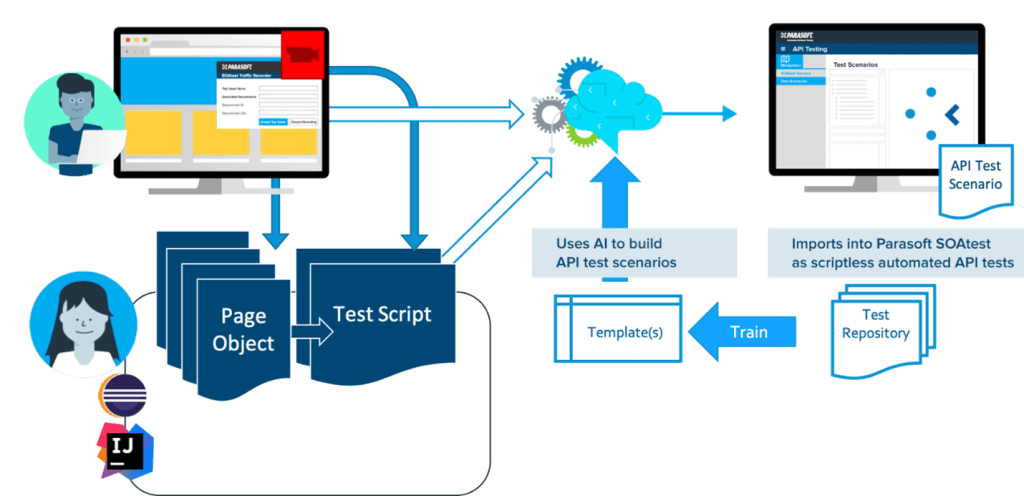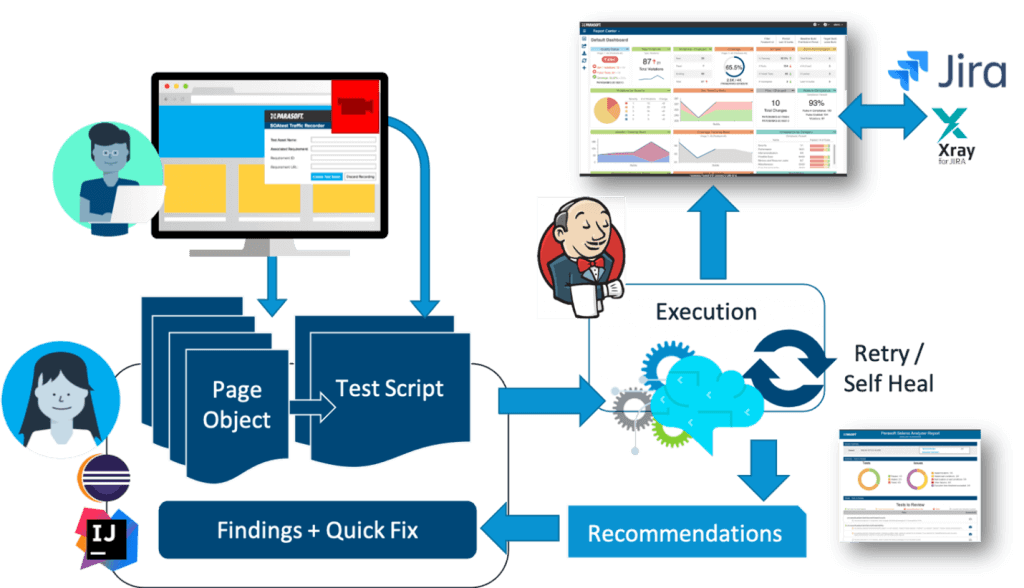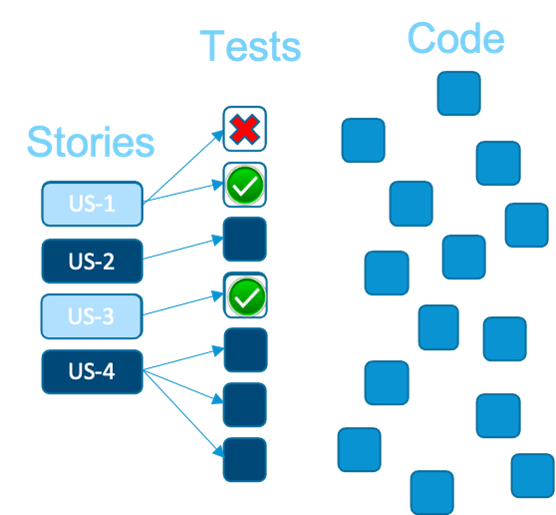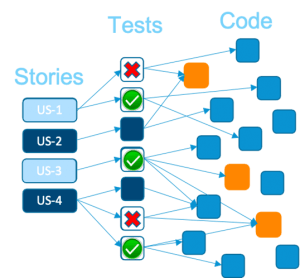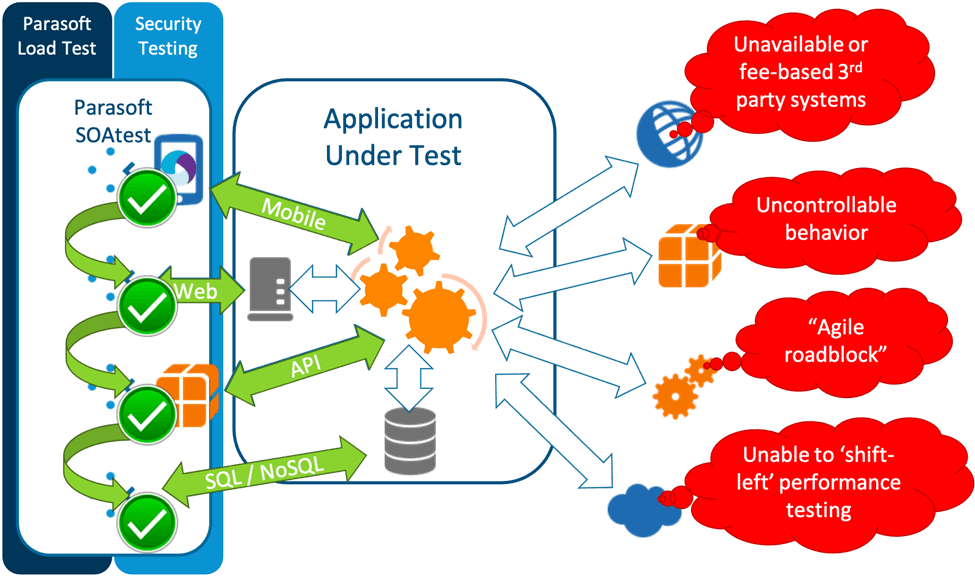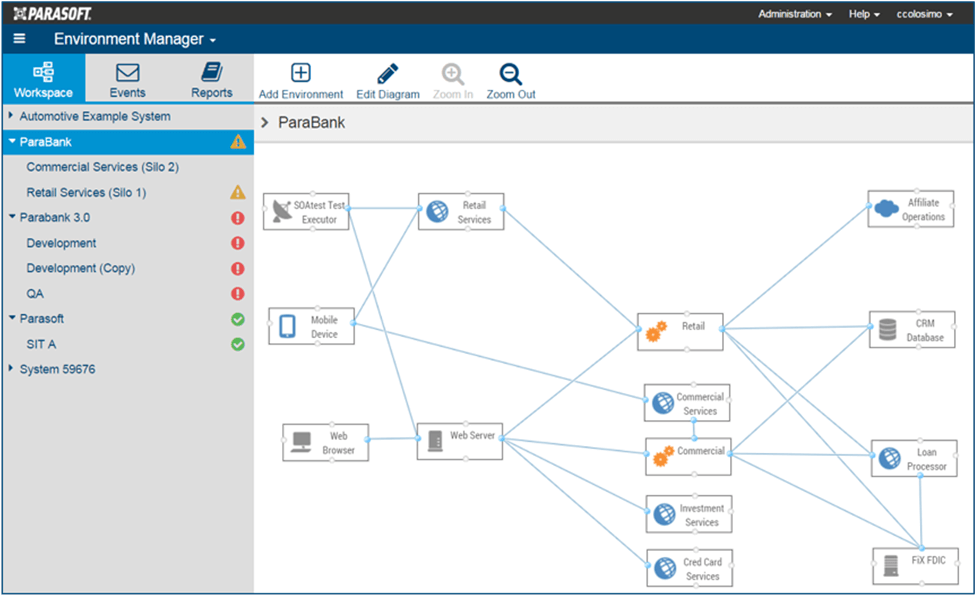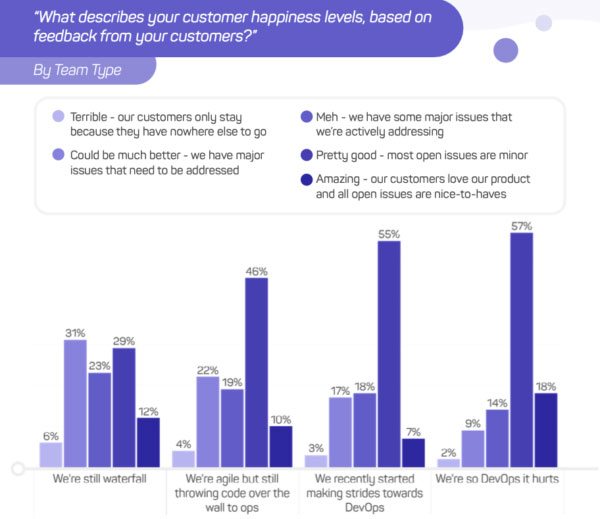Thanks to Mabl for providing us with this blog post.
The digital experience has become a core aspect of the enterprise, forever linked to customer experience and business outcomes. Customers are online more than ever before, and enterprises have to offer reliable, high-quality capabilities that facilitate engaging and inclusive digital experiences. To exceed this elevated bar in 2023, software test teams should be aware of the trends in DevOps, cloud migration, and digital transformation that will continue to be enabled by strong quality practices.
DevOps Adoption Continues to Grow
DevOps redefines how teams, processes, and technology are aligned within an enterprise to make software development faster and more collaborative through automation. According to the 2022 Testing in DevOps Report, enterprises of all sizes are pursuing full DevOps adoption with automated workflow pipelines. Embracing DevOps practices successfully requires a continuous view of quality, which requires elevated, automated testing.
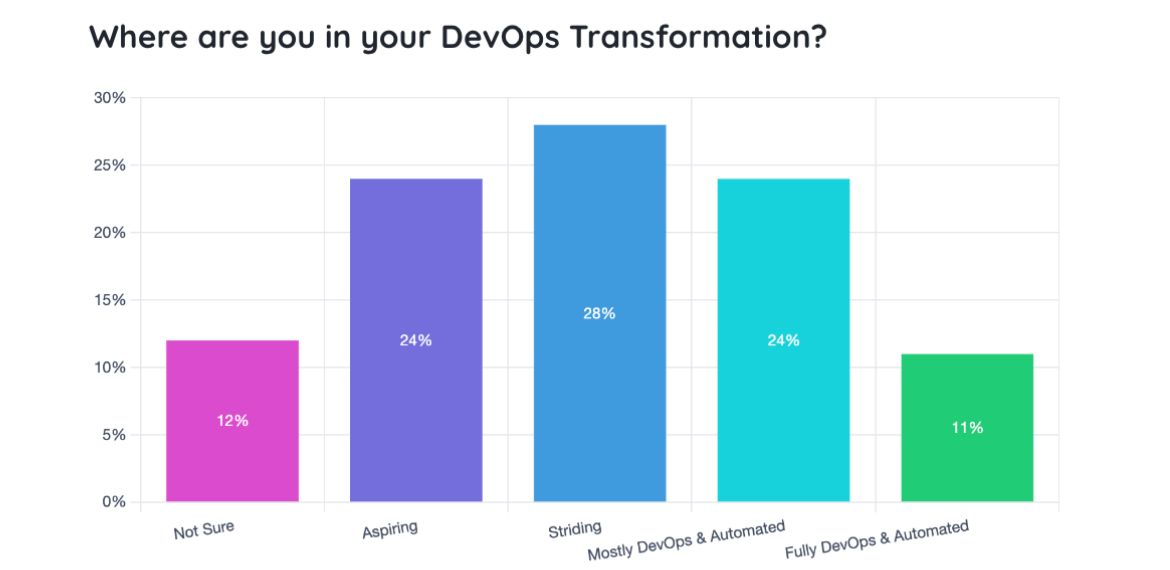
DevOps pays off. Google’s 2022 Accelerate State of DevOps Report reveals that high-performing software teams are more likely to embrace DevOps practices like version control (33%), continuous integration (39%), and continuous delivery (46%).
Teams leveraging these practices are quickly maturing in a way that improves overall product velocity, and overall application quality as well. Mature organizations where quality is at the center of their DevOps transformation will achieve these DORA metrics faster while delighting customers with the frequent delivery of new battle-tested features.
Adoption of Cloud Technologies is Accelerating
With the massive shift to cloud-based architecture, software testers must be mindful of controlling quality throughout the migration. Often, the migration to the cloud goes together with DevOps adoption. As development cycles increase, QA teams should investigate cloud testing solutions to quickly scale up test execution – without the limitations of managing on-premise infrastructure.
More Reliance on APIs
Enterprises are becoming more connected and integrated – all possible via APIs. As with cloud computing, this makes the infrastructure more dynamic. It also presents the problem of having to contend with the quality of third-party APIs that may not be properly updated and secure and determining how it will affect the status and quality of the enterprise’s applications. Prioritizing quality with continuous API testing for integrated services allows test teams to detect issues before they affect customers.
Digital Transformation Initiatives are Increasing
Digital transformation remains a top priority for enterprises. In fact, according to one survey, 94% of CFOs recognize the need to maintain or accelerate the already-intense pace of transformation incited by the pandemic. To continue the digital transformation momentum, quality must become a foundation of software development and delivery.
To help enable digital transformation, QA teams can embed quality throughout the software development lifecycle while finetuning processes and QA support. Outside of ensuring the functional correctness of your application, QA teams can start embedding end-to-end, performance, and accessibility tests in the pipeline as well. This way, you confidently deliver better experiences for customers throughout your organization’s transformation.
Ensure Great CX with Low-code Test Automation
Quality is the differentiating factor among competing organizations. Software QA teams have the opportunity to transform technologies, develop new processes, and contribute to excellent customer experiences if they are successful in building a culture of quality in their organization during transformational times.
Once you’ve built a culture of quality and set up the right team and processes, QA leaders need the right tools to execute. These transformations are enabled by intelligent, low-code test automation like mabl. Mabl allows anyone, regardless of coding experience, to create, execute, and maintain tests, integrate those tests into your development pipeline, and share insights into the holistic quality of your application back to the entire software team.
Mabl helps teams scale their testing with 90% less effort, giving QA teams time back to grow test coverage and focus on testing activities that positively impact the customer experience.
Author

Leah Pemberton
Director, Marketing at Mabl
Leah is the Director of Marketing at Mabl, writing frequently about quality engineering and building a culture of quality.
Mabl is an EXPO Gold partner at EuroSTAR 2023, join us in Antwerp

